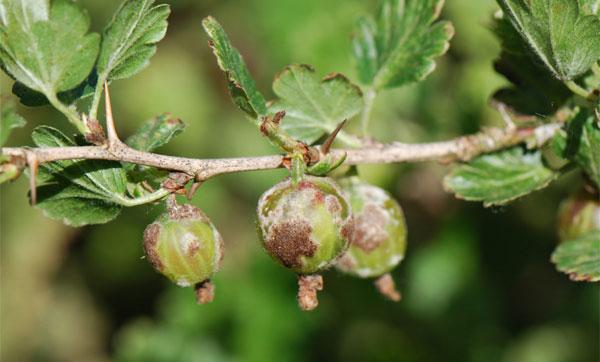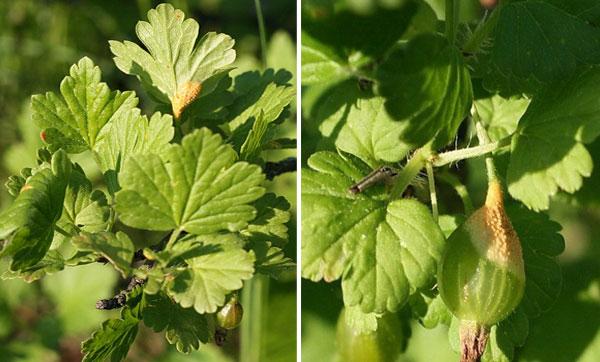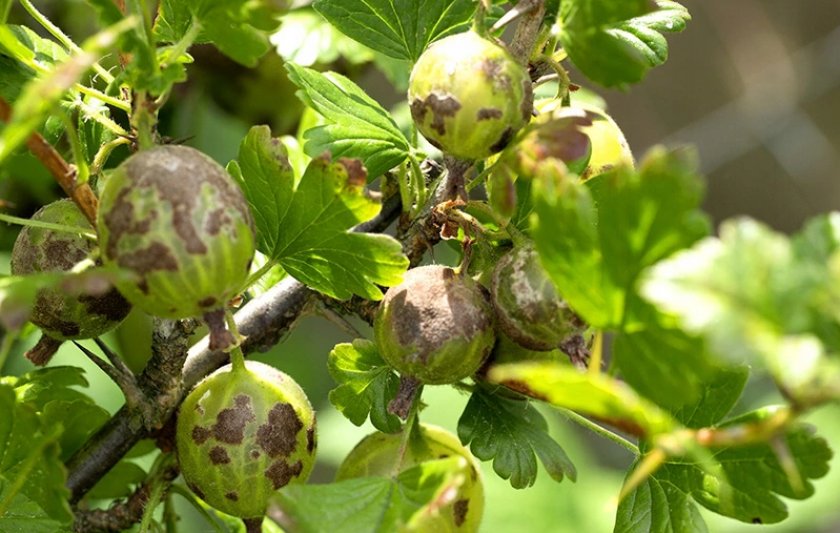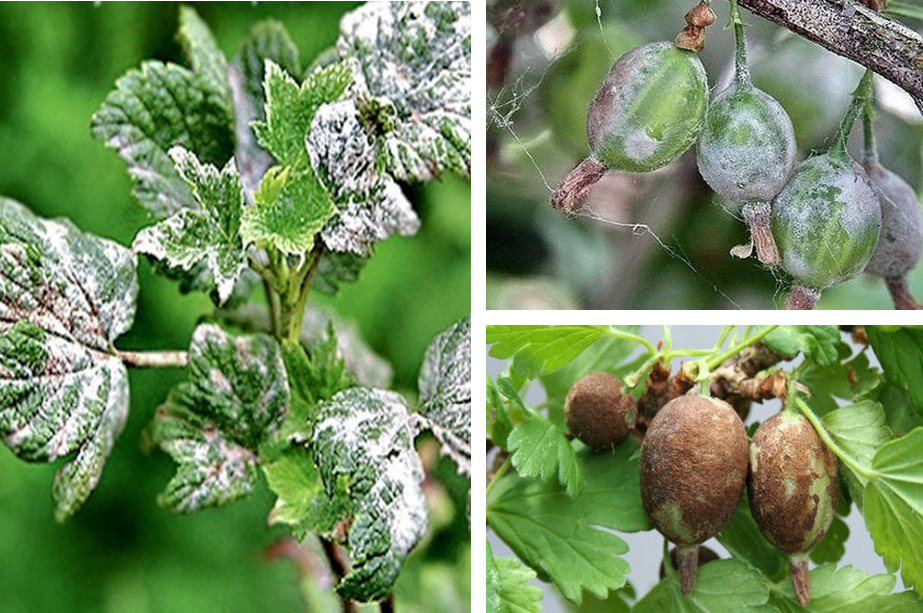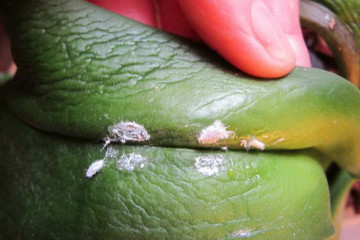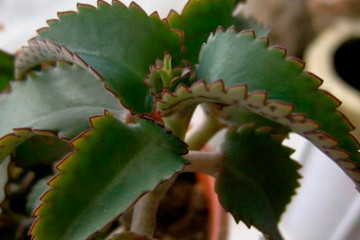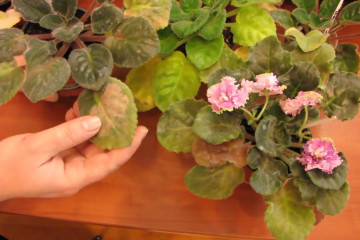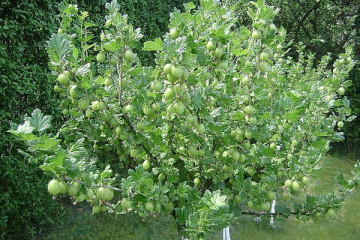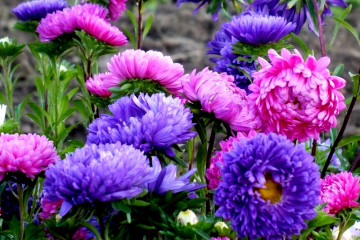Gooseberry diseases and their treatment
Content:
Gooseberry diseases can kill the plant and greatly reduce the number of berries. Its diseases are similar to those of currant. However, his ailments are spreading at a faster rate. It is required to identify the cause of the disease in time and carry out the required treatment. The article provides a description of gooseberry diseases and how to deal with them.
Symptoms that indicate the plant is sick
Symptoms of gooseberry diseases include:
- the appearance of white bloom on the leaves;
- gooseberry leaves turn yellow, curl and dry;
- the appearance of gray spots on the leaves;
- the plant stops growing and yield drops;
- covering the berries with a brown bloom;
- the berries have turned white or blackened;
- leaves shrink and wrinkle;
- the berries dry and subsequently fall.
To understand why gooseberry berries fall and other symptoms appear, it is required to determine what kind of disease affected the bush and take appropriate measures.
Major diseases and treatments
Below are the most common diseases and what methods can be used to overcome them.
Anthracnose
Gooseberry anthracnose is a fungal disease. Symptoms appear during the flowering period. The disease reaches its peak in the second half of summer.
The disease begins to spread to all parts of the plant. At the beginning, grayish spots appear on the leaves. They have a gray tubercle in which fungal spores develop. Over time, these spots begin to turn brown and grow strongly. Due to the defeat of the bush, the growth of shoots decreases, the leaves dry out, and the yield decreases.
The fight against this disease is as follows:
- At the initial stage, spraying with a solution of copper sulfate is required. To do this, you need to mix 20 g of vitriol and 5 liters of water.
- If the disease continues to develop, then treatment with Bordeaux liquid 1% is carried out. It is carried out before the bush blooms, and also after that. After the berries are harvested, the bush is sprayed again.
White spot, or septoria
Gooseberry septoria is also a fungal disease. At the beginning of summer, the first symptoms of the disease begin to appear on the plant. Spots of black and brown appear. They have a red border and the center is slightly lighter than the rest of the spot. Their shape is not correct. When the disease spreads, the fruiting body of the fungus begins to appear. As a result of the defeat, the foliage dries and falls off. On diseased branches in the spring, the buds do not bloom.
To cure a bush from septoria, it is required to carry out the same measures as with anthracnose. It is also required to additionally feed the plant with fertilizers, which contain a large amount of boron, manganese, zinc and copper.
Gooseberry mosaic
Only gooseberries are ill with this disease. It is viral. The disease is spread by gooseberry pests: aphids, ticks, whiteflies. Also, the plant can get sick through the garden tool when pruning.
The symptoms of mosaic disease are:
- a mosaic pattern appears on the leaves. The color of the picture is yellow or yellow-green;
- new shoots and the plant itself stop growing;
- yield is greatly reduced;
- foliage shrinks and shrivels.
There is no way to save the plant. The affected bushes are dug up and burned.
Goblet rust
The cause of the disease is a fungus. It hibernates on fallen leaves and shallow underground. When spring comes, the spores spread and land on the bush.
This disease is the reason why gooseberries drop berries without ripening. In spring, yellow or light orange spots appear on the leaves on top. A bulge begins to grow on the leaves below, which resembles a glass. It contains spores of the fungus. If you touch them, spores fly away with the wind and fall on healthy plants.
How to spray gooseberries is 1% Bordeaux liquid. The procedure is carried out three times: during bud break, as the flowering ended, one and a half weeks after the second spraying. You can also use copper-containing fungicides.
Scab
Often gardeners have a question: gooseberry berries seem to have been cooked, what kind of disease. This is a manifestation of scab. It is associated with damage by microscopic fungi.
The causes of scab:
- high and lingering humidity;
- strong temperature drops;
- excessive pruning of the bush;
- oversaturation of the soil with nitrogen;
- stagnation of moisture in the soil.
The leaves are affected first. Spots appear that gradually increase in size. Then the berries get sick. Further shoots are affected, their growth stops.
Treatment is possible with chemicals or folk methods.
Chemicals:
- copper sulfate: mix laundry soap (75 g) with water (5000 ml). Add copper sulfate (20 g);
- topaz. It is prepared according to the instructions. Processing is carried out before the plant blooms;
- Bordeaux liquid: mix copper sulfate (100 g), lime (100 g), water (8000 ml).
Treatment with folk remedies can be carried out at the initial stage. To do this, do:
- mullein solution. Mix mullein and water (1: 3). The agent is sprayed on the bush;
- ash solution: ash (1000 g) is mixed with water (10 l). Insist for a week. Spraying is carried out every two days;
- soda solution: laundry soap (50 g) is dissolved in water (10 l). Soda (40 g) is added. Processing is carried out before and after flowering.
Mold
Mold is the reason why gooseberries fall off. Its appearance is associated with the following diseases:
- powdery mildew;
- gray rot;
- goblet rust.
Goblet rust was discussed above. Powdery mildew will be discussed below. With gray rot, the berries become covered with a gray bloom and begin to rot.
How to deal with gooseberry gray mold:
- spraying with copper sulfate 3%;
- treatment with soda solution;
- removal of affected shoots, dried leaves and berries.
Verticillary wilting
The disease is caused by fungal spores that attack the roots. The leaves turn yellow and wither, but remain on the bush. At first, the disease is imperceptible, but then it develops at a rapid pace. If you do not start treatment, the fungus will rise to the shoots and block the entire food system, as a result of which the plant will die.
Spheroteka (powdery mildew)
It is a fungal infection. The disease begins to affect berries, young shoots and leaves. Its manifestation begins in June. A white bloom appears on the leaves, which quickly spreads to other leaves and shoots.
Then the white bloom becomes gray. It becomes dense and begins to blacken. They contain fungal spores. They are easily transferred with the wind to other crops. Due to this disease, the leaves do not grow, dry and curl. The fruits also do not grow, they are completely covered with rot. They dry, crack and fall off. If you do not carry out treatment, then the bush dies after two years.
With symptoms of defeat, it is necessary to spray the bushes with phytosporin, Bordeaux liquid, and a dispute. Spraying is carried out up to four times, when the bush is severely affected: before and after flowering, after harvesting and another one and a half weeks later.
Prophylaxis
Preventive care is required to prevent the onset of disease. It is as follows:
- it is worth choosing varieties that are most resistant to disease;
- it is required to observe the minimum required distance between the bushes so that they have enough nutrients in the soil;
- gooseberries need to be fed, but, most importantly, do not overdo it;
- loosen the ground under the bushes after watering;
- carry out autumn and spring pruning. Remove suspicious shoots;
- it is required to burn leaves that have fallen off, and cut branches;
- pour boiling water over the gooseberries until the buds open. Carry out the treatment with Bordeaux liquid and other means of copper in the spring;
- plant garlic, dill, chrysanthemums and marigolds next to the plant. They will scare away pests.
